
Author: Lauren
Chatsworth House, a stately home in Derbyshire, is best known to me as the setting for Pemberley, Mr Darcy’s estate in the 1995 BBC mini-series of Jane Austen’s Pride and Prejudice.
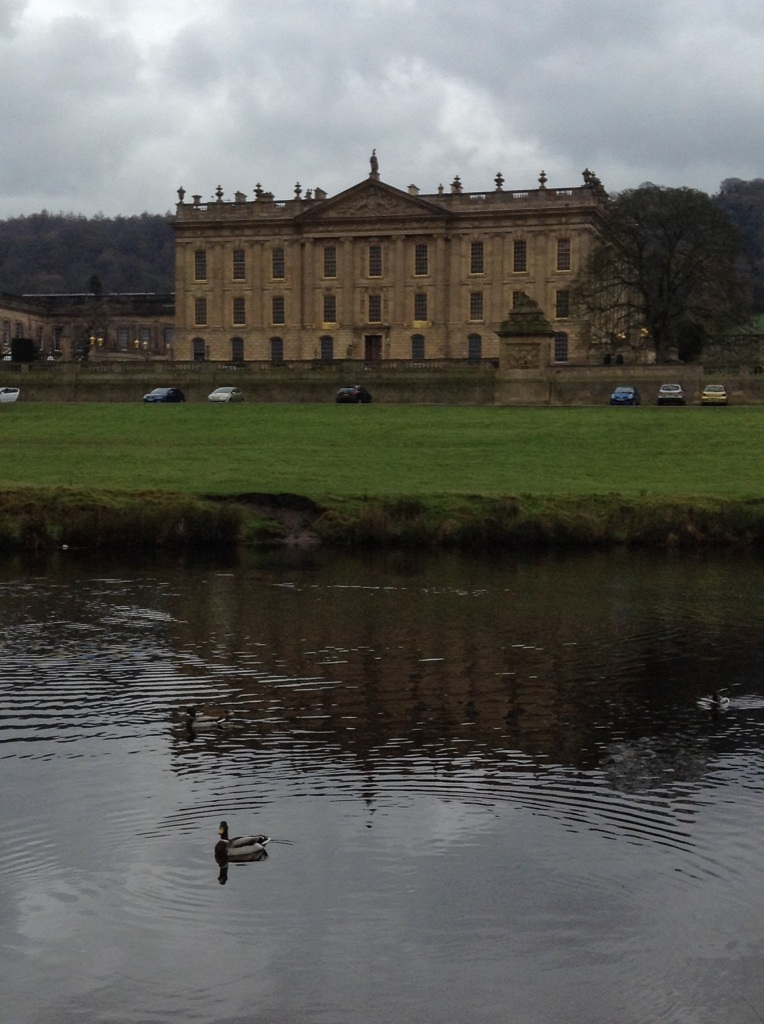
That is why at 10:30am on a Sunday morning we turned in to Chatsworth Road and joined the queue of cars, only to still be creeping forward in the queue an hour later.

Little did we know that our visit coincided with the first weekend of the Chatsworth Christmas Market – there seemed to be more people swarming the stalls than headed for the House!
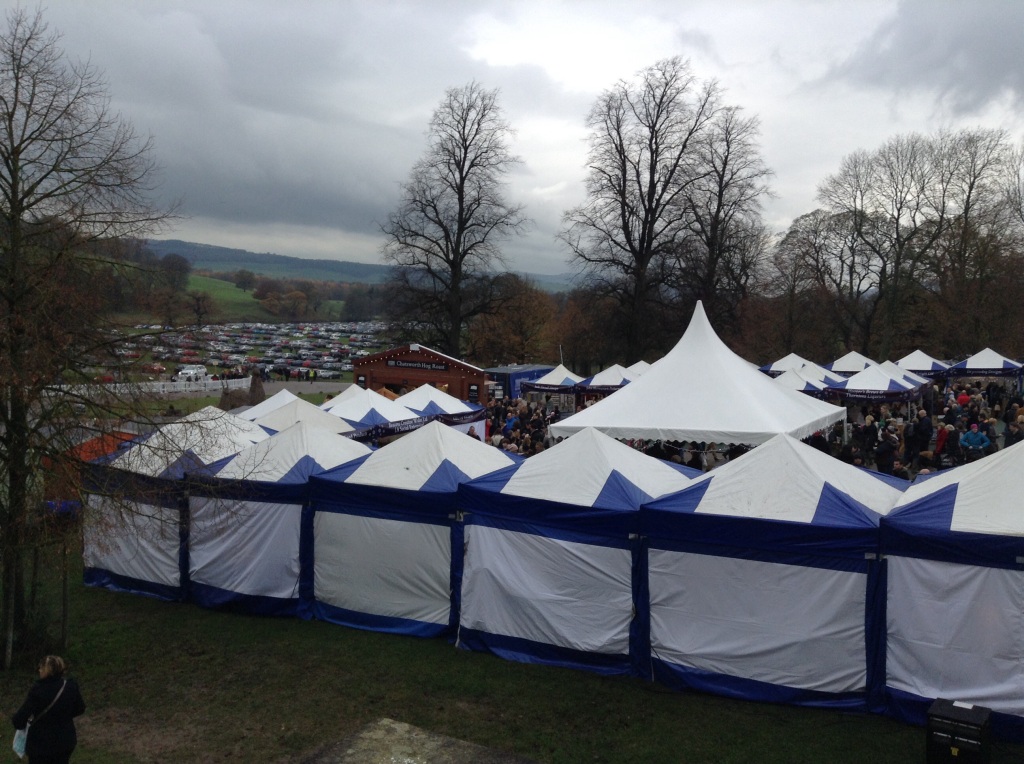
The Christmas decorations were up inside the house, themed with characters from Lewis Carroll’s Alice in Wonderland. I had to remind myself to look at the house itself – I was so taken with the decorations (my favourite? The Mad Hatter’s Tea Party in the hall!).
After walking around the gardens (and getting absolutely stuck in the muddy maze!) we wandered through the busy Christmas markets, had some lunch, and by the time we waded through the mud to get back to our car two hours later, the cars were still queued up to get in!
Should you come while the Christmas markets are on? Absolutely. While we didn’t think much of the markets themselves, the Christmas decorations in the house were inspiring and must have taken a lot of thought, effort and care to construct!
It isn’t cheap – parking on the weekend inside the grounds costs ten pounds (though we were given a five pound discount voucher against our admission costs to the house) and tickets to the house and gardens sit at 22 pounds. However, if you’re a admirer of stately homes (or of a certain BBC mini-series) it is worth it.
Looking for afternoon tea in York? The recommendation you’ll hear the most is to go to Bettys Tea Rooms. Once there, you’ll often be faced with a line out of the door and a wait for a table.
The cakes, slices and biscuits are worth waiting for, but did you know that there’s a second Bettys, just around the corner on Stonegate?
I thought that the second Bettys was only for take away deliciousness, but when we were there today, I noticed that they have tea rooms upstairs – with no queue in sight!
Bettys had their Christmas range out, so we chose a white chocolate ganache snowman and a marzipan pudding to try, and they didn’t disappoint!
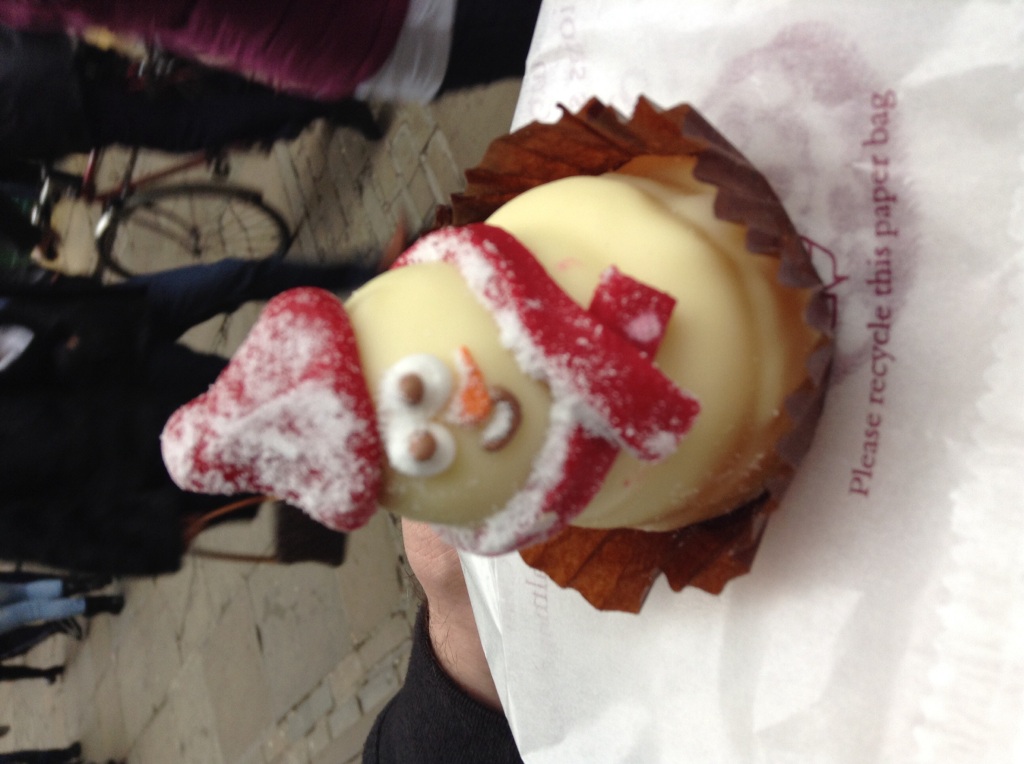

If you’re in York, go to Bettys Tea Rooms and enjoy. And if there’s a line of people at the main one, sneak over to Stonegate!
Ever since I heard that the movie Robin Hood: Prince of Thieves was partly filmed at Sycamore Gap, a section along Hadrian’s Wall, I have wanted to visit it. When I was in the UK last year, I almost booked a day tour that went there, but chose one that went to Alnwick Castle instead. This year, we had a hire car from Europcar, and discovered that it’s quite easy to get to Sycamore Gap – if you know where you’re going.
Hadrian’s Wall and Sycamore Gap in particular, appear in the movie Robin Hood: Prince of Thieves as Robin and Azeem (played by Kevin Costner and Morgan Freeman) make their way from the English coastline to Nottingham, where Robin first encounters the Sheriff’s men as they trap Little John’s son Wolf up the tree at Sycamore Gap.
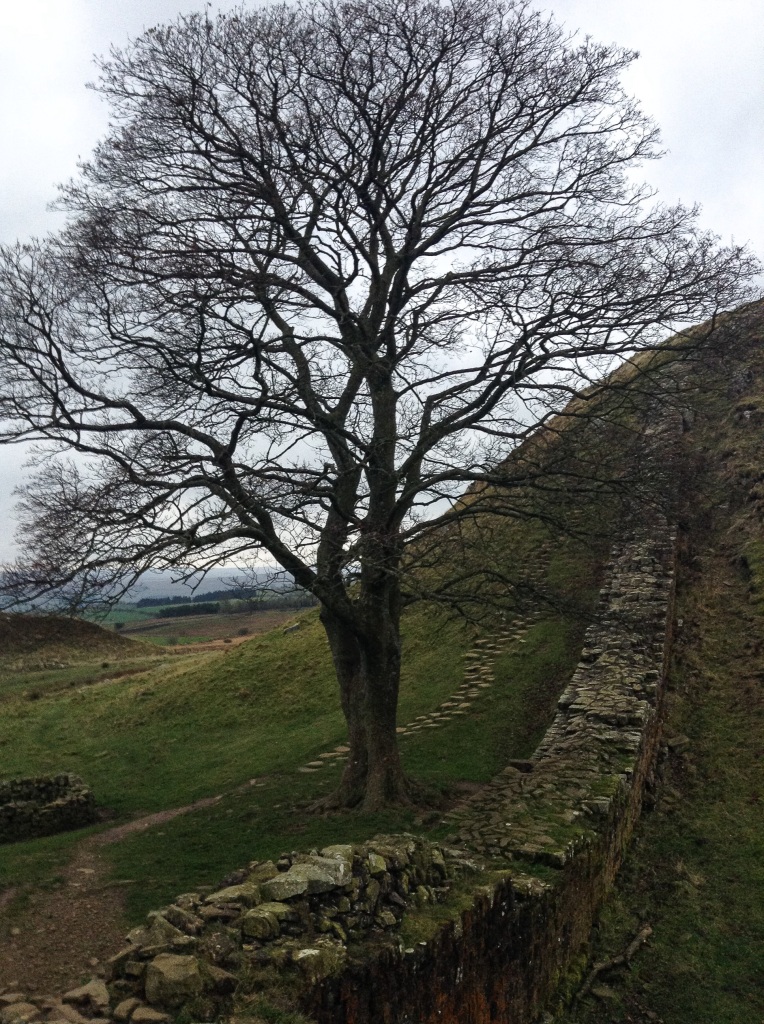
Unfortunately, there’s not a great deal of information online, and doing a Google search combining ‘Robin Hood’ and ‘Hadrian’s Wall’ returned plenty of photos but no directions.
Northumberland National Park does offer a brochure that includes it in one of their Hadrian’s Wall walks, but doesn’t tell you how to get there.
Driving to Steel Rigg Carpark
The easiest place to begin your walk to Sycamore Gap is by parking in the Steel Rigg carpark. (A four pound fee applies but the same all-day ticket can be used in six of the Hadrian’s Wall carparks)
To get there, you need to get on the A69 that runs between Carlisle and Hexham.
Look out for signs for Haltwhistle and Once Brewed. If you follow those signs you should end up in front of the Once Brewed Visitor Information Centre at the stem of a T-Junction. Turn right and then immediately left and follow the road up to the Steel Rigg carpark. (Note: turning left from Once Brewed will take you past Twice Brewed)
How to get from Steel Rigg Carpark to Sycamore Gap
Once you are in Steel Rigg carpark, you will find a gate at the back of the carpark that will take you through to the walking trail. To your left, you will see a lake partially hidden by some hills – if you see this you are in the right place!
Follow the trail (note at some points the dirt and gravel trail disappears and turns to grass) over the first two hills. You should come across a ruin of a Roman fort known as Milecastle 39.

Sycamore Gap is just over the next hill (if you have gone past the lake you have gone too far). The walking trail winds right around the lone tree, so don’t worry, you won’t miss it!
It took about half an hour for us to walk from Steel Rigg Carpark to Sycamore Gap.
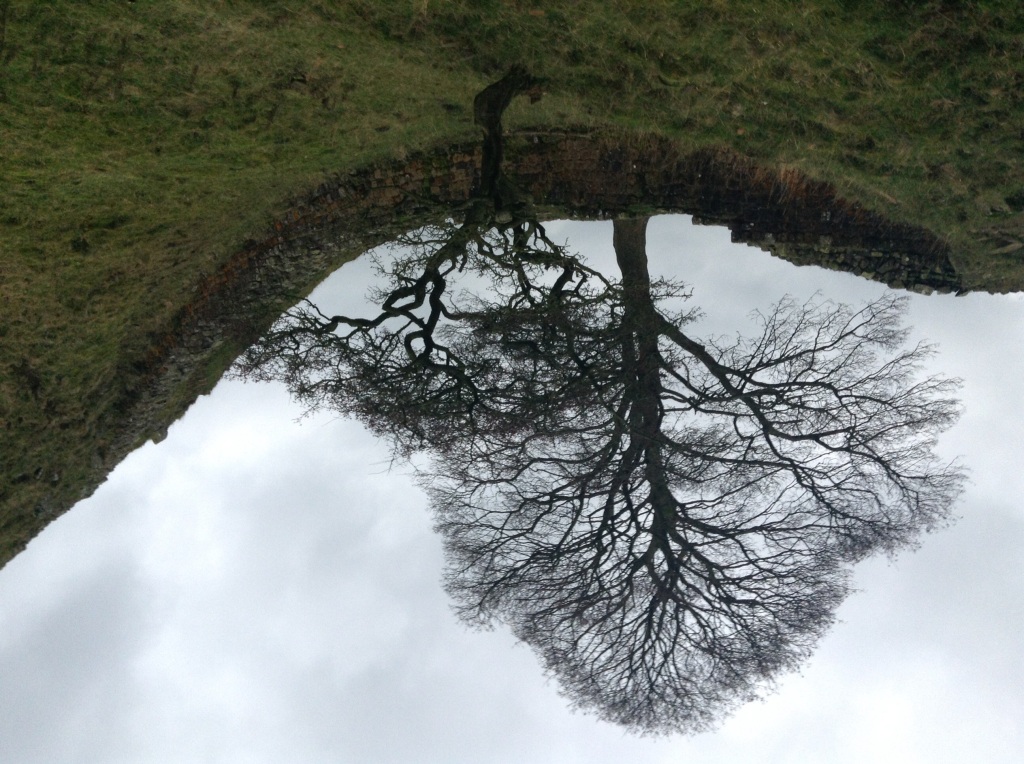
Whether or not you’re a fan of the movie, Hadrian’s Wall and the surrounding countryside is beautiful (even in low light with winds strong enough to stop you from climbing down a hill!). A UNESCO World Heritage Site, it is definitely worth the effort of all of those hill climbs!
A lone bagpiper plays Amazing Grace as locals hurry along their way to work. The morning sun is hidden behind clouds that threaten rain. We stand on the edge of the East Princes Street Gardens and stare up at the 200 feet tall gothic tower before us: the Scott Monument.
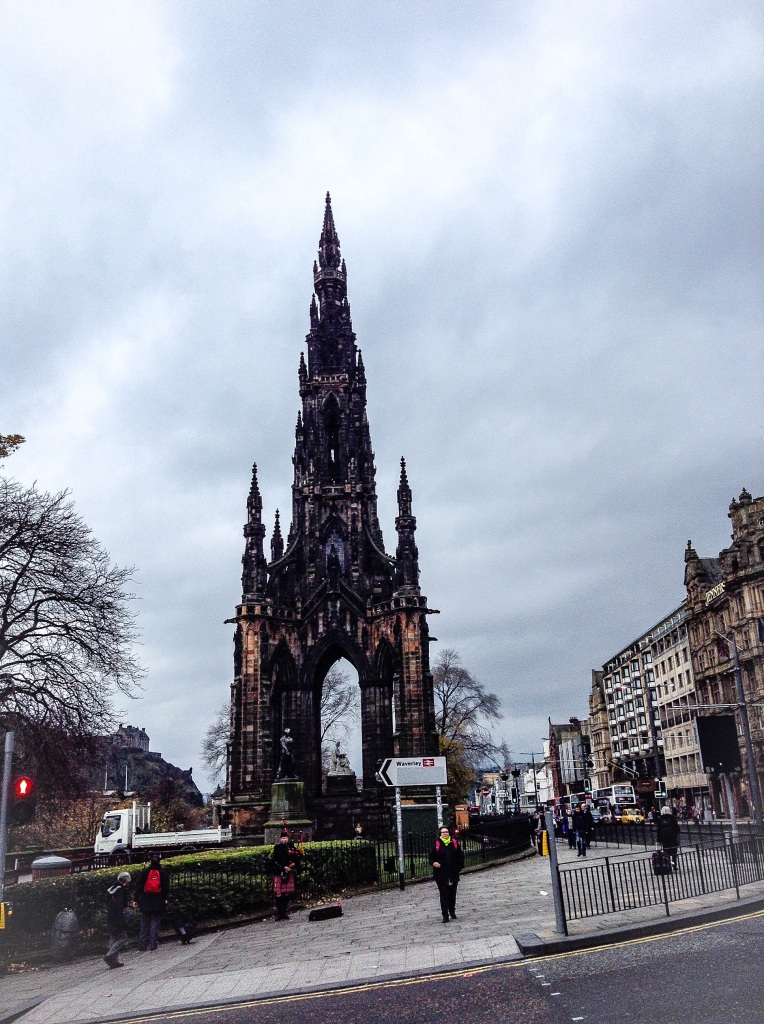
The largest monument in the world to commemorate a writer, the Scott Monument is dedicated to the life and works of Sir Walter Scott, author of Rob Roy and Ivanhoe.
From ground level, the top of the Scott Monument looks a long way up, much higher than the advertised 287 steps. 287 steps sounds easy (after all, in the last week we’ve conquered the 366 steps in the Belfry in Bruges and the 387 steps of Notre Dame de Paris, not to mention the 669 steps up to the second level of the Eiffel Tower!), but the black spire of the Scott Monument seems like it will take some effort getting to.
After finding the entrance and paying the four pounds to get in, we are presented with certificates certifying that we have climbed all 287 steps. My brother suggests we fill in the certificates and save ourselves the climb. Instead, we begin the ascent.
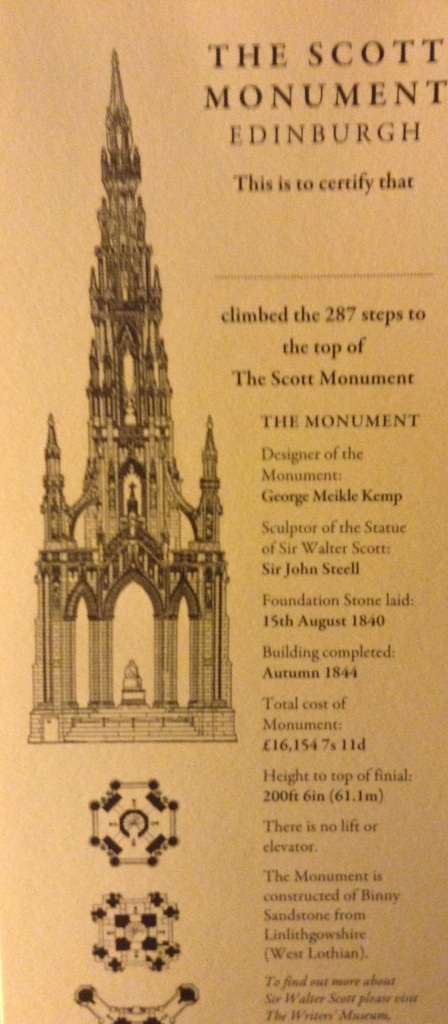
Getting to the first of the four levels feels like an achievement. While the stairs start off being wide, by the time you burst out on to the landing, the staircase walls are literally closing in on you: as you climb up the top of one of the towers and the walls become slanted.
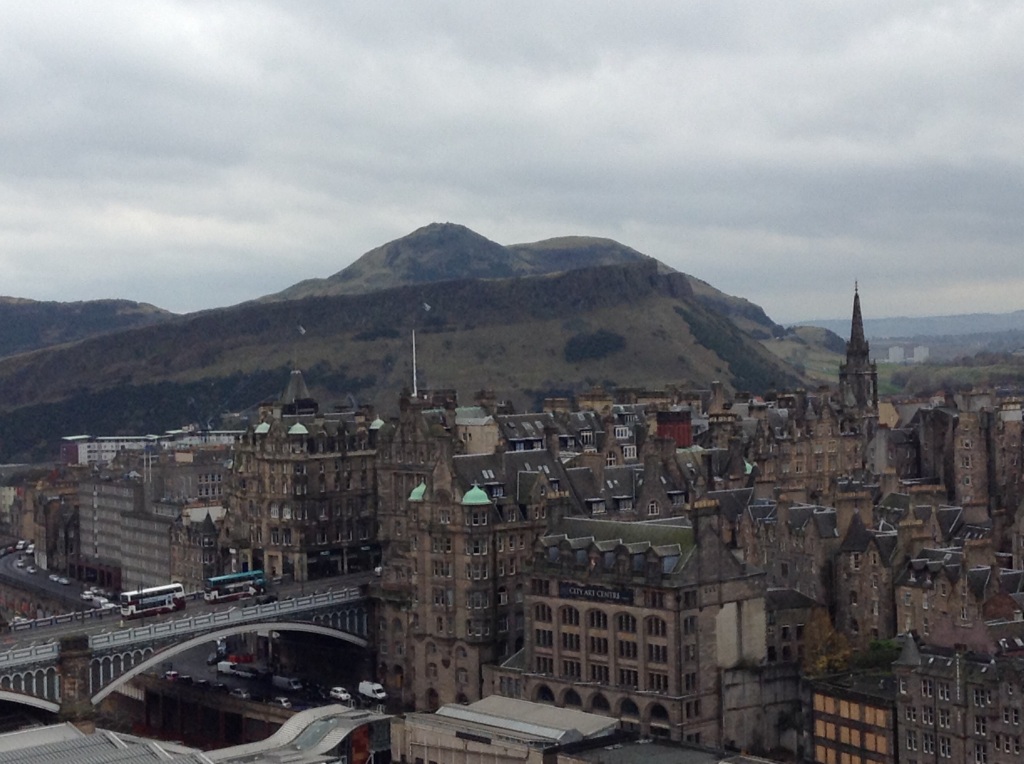
The view from the first platform is worth the admission alone. You have a 360 degree view over Edinburgh, over to the castle, down Princes Street, across to the North Bridge and Calton Hill and out to the Firth of Forth. There are statues and gargoyles staring down at the people below. On this level, there is also a small museum about Sir Walter Scott and the building of the Scott Monument.
The next set of stairs are noticeably narrower than the first, although the third set are wider.
It’s the fourth (and final) set of stairs that present a problem. Not only are they narrowest stairs but the ceiling becomes lower, too. My 6 foot tall brother was worried he wouldn’t be able to make it to the top because he wouldn’t fit through the narrowing gaps. Though he did make it to the top, the folks at the Camera Obscura would later tell us that a Welsh rugby player hadn’t been so lucky, and needed the fire brigade to come and rescue him when he found himself stuck in the Scott Monument!
It is a bit scary – even though there is a sign at the entrance that you should keep to the right when passing other people on the stairs, you begin to hope you don’t meet anyone coming the other way, because there just isn’t enough room in the stairwell to push past someone, and you don’t want to go all the way back to the previous level only to climb more stairs!

The stairs are all part of the fun, and can easily be forgotten once you’ve made it to the top and can look over one of the best views in Edinburgh (and earned the right to fill in your certificate)!

Have you climbed the Scott Monument? Share your experience in the comments – I’d love to hear what others thought!
Remembrance Day
On the 11th of November at 11AM, we stop to remember the men and women who have given their lives in the service of our country.
This year marks 96 years since the Armistice was signed between the Allied Forces and the German forces on November 11 1918, ending the Great War.
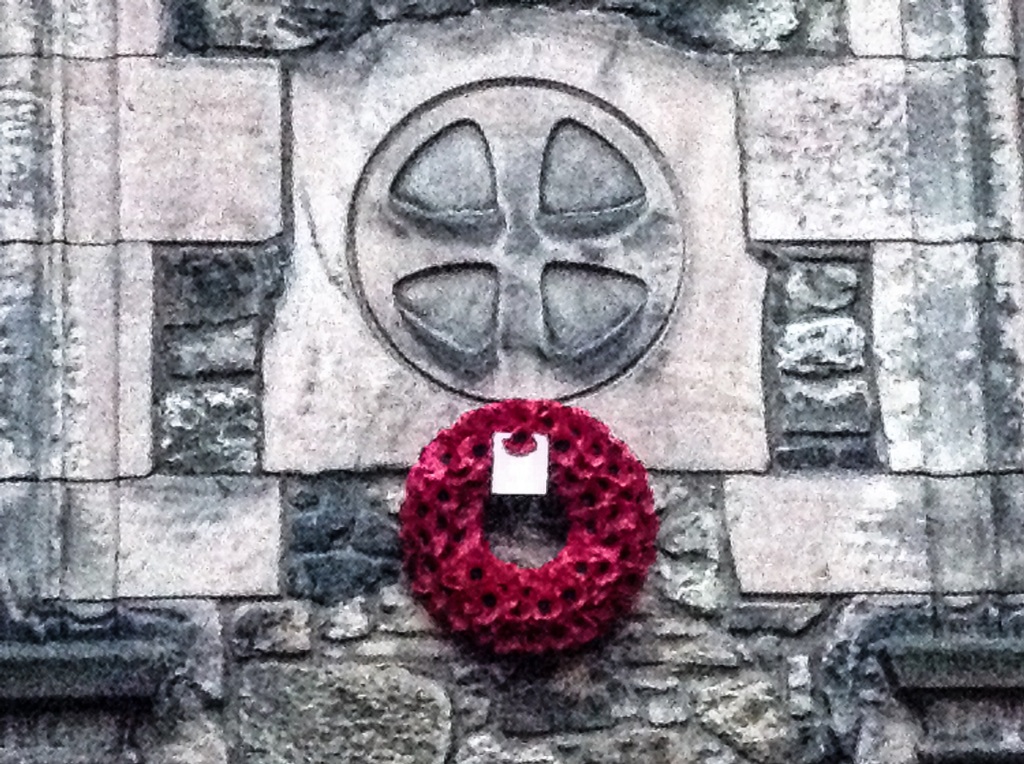
Armistice Day, as it is called here in the UK and Europe, was commemorated with the traditional two minutes silence at 11AM.
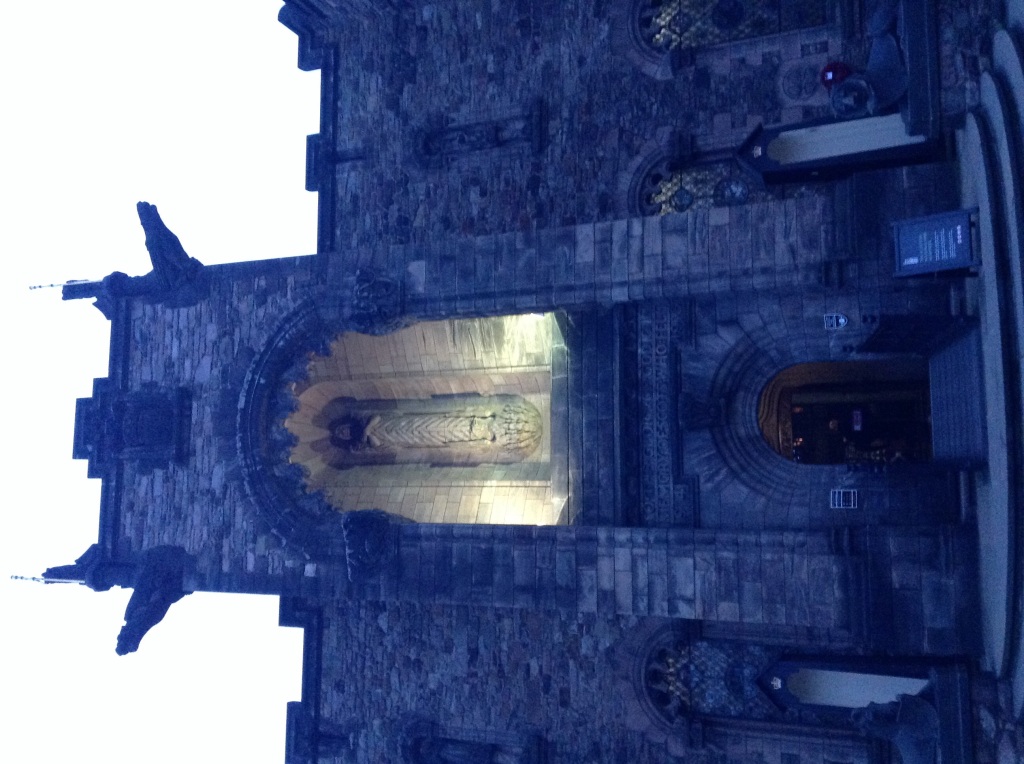
Later, as part of our visit to Edinburgh Castle, we spent some time paying our respects in the National War Memorial of Scotland and learning more about the Scottish experience of war in the National War Museum.
Lest we forget.
The Paris Museum Pass gives you free access to over forty museums and monuments in Paris and the surrounding region. We decided to purchase a four day pass, thinking that with our planned visits to the Chateau de Versailles, the Louvre, the Towers of Notre Dame and the Arc de Triomphe, we would eventually come out ahead after paying the 56 Euros per pass.
Musée Rodin
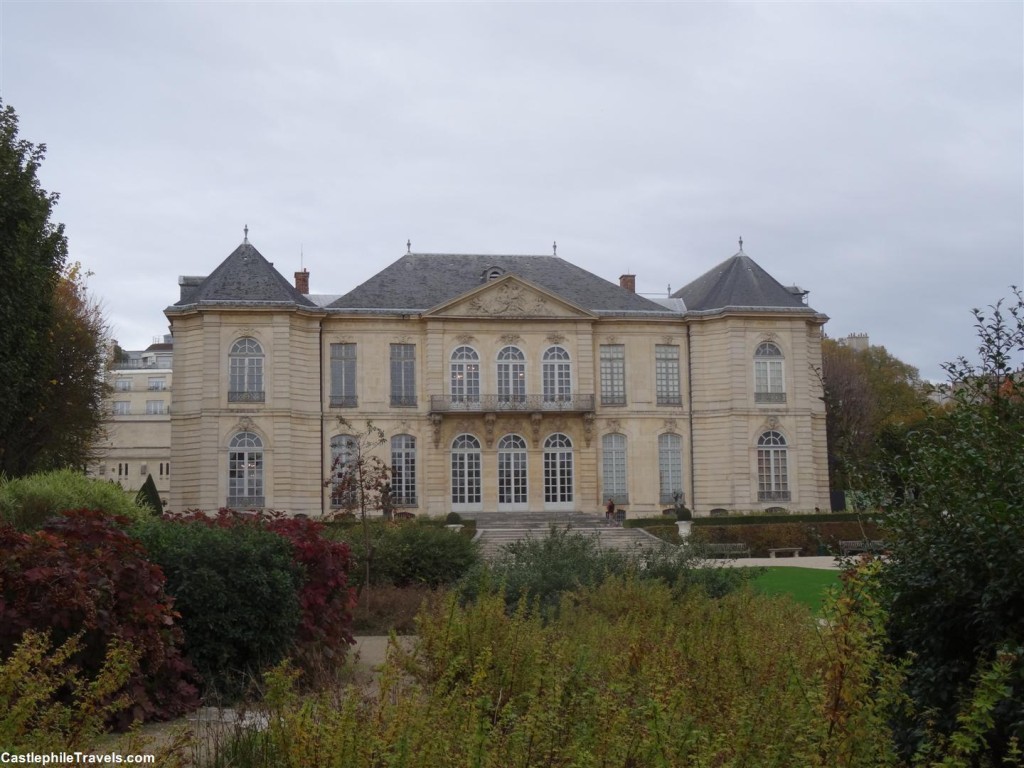
On my first orientation tour of Paris in 2010, my tour guide pointed out the back of Rodin’s The Thinker as the bus sped past. Ever since then, I’ve wanted to visit the Rodin museum – and since it was listed on the museums and monuments that were part of the Paris Museum Pass, I grabbed the opportunity.
While darting from statue to sculpture in the gardens of the Musée Rodin, and deciding that the estate could be added to the shortlist of houses that I could live in, we began to worry – we couldn’t see The Thinker anywhere.
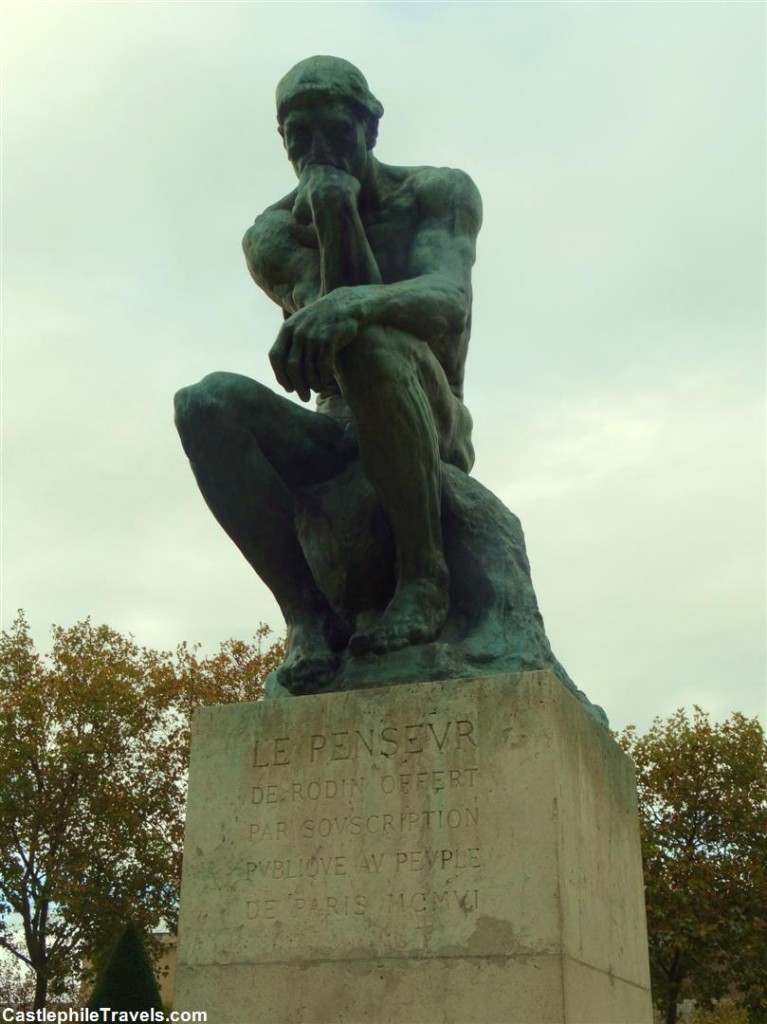
It turned out we had taken the longest way around possible. As we had gone through the entrance and stood facing the chateau, we had headed left all the way around the gardens and then through the house. The Thinker was just to our right!
Palais de la Découverte

The grand foyer of the Palais de la Découverte
For a break from the traditional sightseeing (and to get more value out of our Paris Museum Passes!), we headed for the Palais de la Découverte, a science and discovery museum housed in the Grand Palais. We were hoping for a French version of the Investigator Science Centre that we grew up with back in Adelaide. While there were some interactive games and exhibits (including some computer quizzes in English), there was a lot of reading to do as well and it wasn’t as hands-on as we were expecting.
Note: Entrance to the Planetarium (3 Euros) was not included in the Paris Museum Pass.
Musée de l’Orangerie
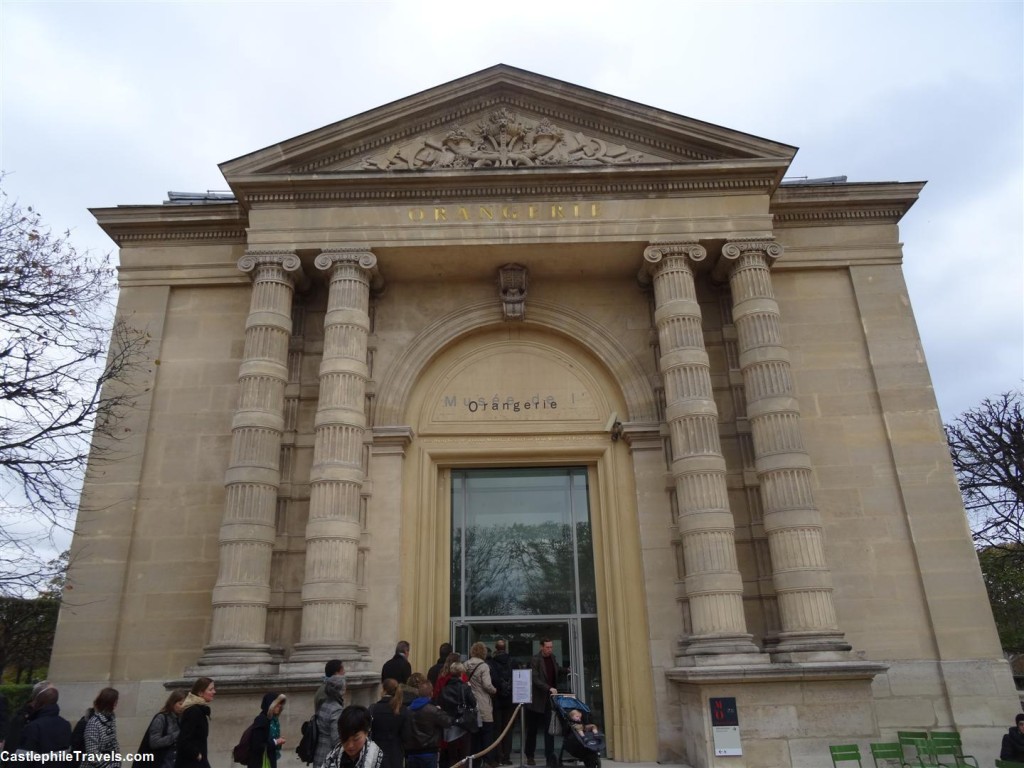
Another museum that was on my list to see was The Orangerie. I had wanted to go there to see Monet’s waterlilies paintings, but was surprised to find that they were not my favourite art pieces in the small gallery. I far preferred the Renoir portraits tucked away amongst the work of other renowned artists.
Is the Paris Museum Pass worth it?
Cost of Paris Museum Pass: 56 Euros
Entrance costs from Day 1: 18 Euros
Entrance costs from Day 2: 31.50 Euros
Entrance costs from Day 3: 9.50 Euros
Cost of entry into the Musée Rodin: 7 Euros
Cost of entry into the Palais de la Découverte: 9 Euros
Cost of entry into the Musée de l’Orangerie: 9 Euros
Verdict: 28.00 Euros ahead
The four day Paris Museum Pass was worth it for us, though admittedly some of the places we visited, such as the Palais de la Découverte, we only went to because it was listed on the Paris Museum Pass.
We didn’t feel any pressure to visit as many sights as we could to make our money back. There were many other museums and monuments we could have crammed in if we had really wanted to, but we took it easy and still managed to come out ahead of what we would have paid visiting all of the sights separately.
Since we visited Paris in autumn, we had no chance to be able to ‘jump the queue’ with our Paris Museum Passes, but having this ability would be very useful during June, July and August, when tourist numbers in Paris are at their peak.
To find out whether it is worth it for you, take a look of the list of museums, palaces and attractions that the Paris Museum Pass grants you entrance to, and work out which ones you want to visit and whether you have the time to see them.
A complete list of the museums and monuments can be found on the Paris Museum Pass official website.
The Paris Museum Pass gives you free access to over forty museums and monuments in Paris and the surrounding region. We decided to purchase a four day pass, thinking that with our planned visits to the Chateau de Versailles, the Louvre, the Towers of Notre Dame and the Arc de Triomphe, we would eventually come out ahead after paying the 56 Euros per pass.
The Arc de Triomphe
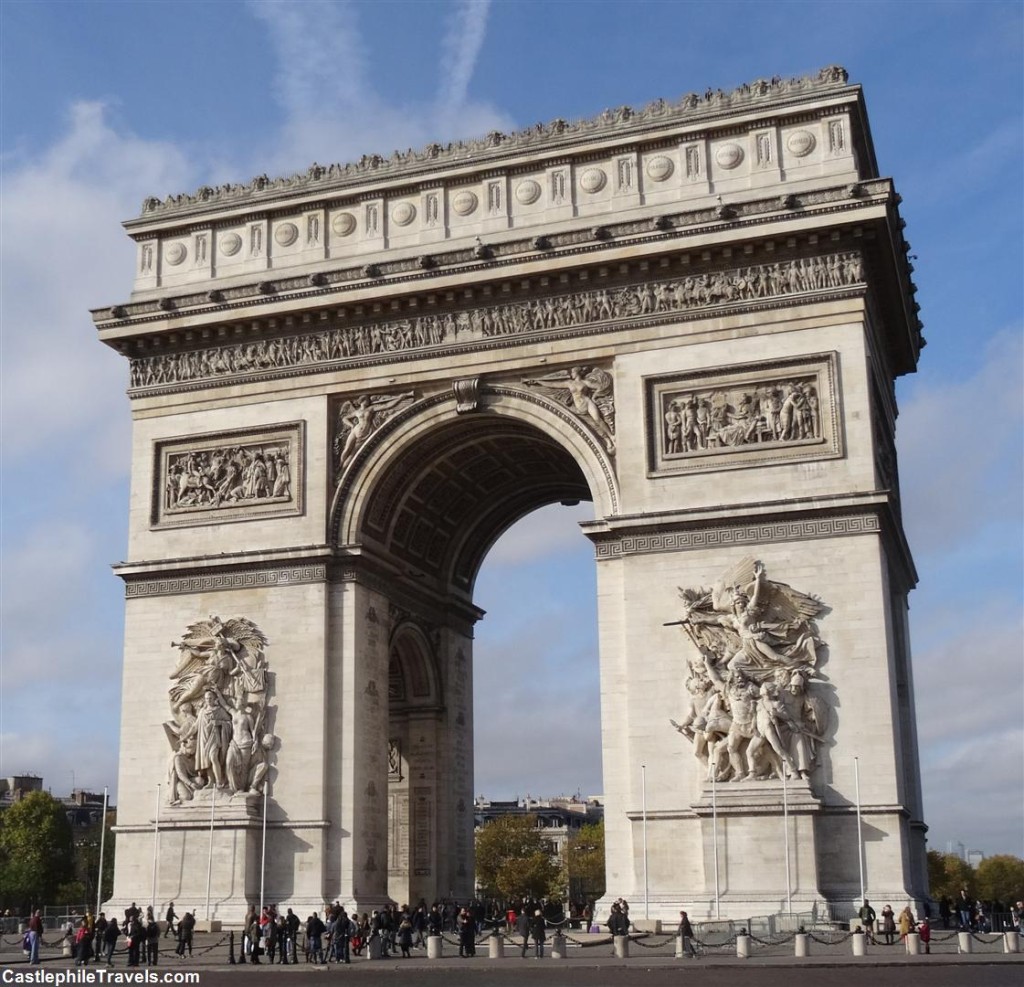
After a lazy morning exploring Montmartre, we headed for the Arc de Triomphe for a 360 degree view of Paris and one of its busiest roundabouts. I enjoyed looking out along the straight avenues that lead to the Place de l’Étoile and watching the chaos on the road below as cars tried to navigate their way on to and off of the roundabout.
We ended up spending the rest of the day window shopping along the Avenue des Champs-Élysées, before making our way up past the Palais Garnier to end the afternoon at the Galeries Lafayette. It was nice to have a day where we didn’t feel like we had to rush around to get our money’s worth out of our museum passes, and by the end of the day we had broken even. Anything we visited on Day 4 would essentially be ‘free’.
Want more information on the Arc de Triomphe?
Address: Place Charles de Gaulle, 75008 Paris, France
Website: http://arc-de-triomphe.monuments-nationaux.fr/
Closest metro station: Charles-de-Gaulle-Etoile
Is the Paris Museum Pass worth it?
Cost of Paris Museum Pass: 56 Euros
Entrance costs from Day 1: 18 Euros
Entrance costs from Day 2: 31.50 Euros
Cost of entry to climb the Arc de Triomphe: 9.50 Euros
Verdict: 3.00 Euros ahead, one day left
The Paris Museum Pass gives you free access to over forty museums and monuments in Paris and the surrounding region. We decided to purchase a four day pass, thinking that with our planned visits to the Chateau de Versailles, the Louvre, the Towers of Notre Dame and the Arc de Triomphe, we would eventually come out ahead after paying the 56 Euros per pass.
Museum Day
The grey Parisian sky was threatening rain, so we decided that the second day of our Paris Museum Pass challenge should be spent indoors as much as possible. We singled out a number of museums that people had recommended to us, such as the Musée National du Moyen Âge, as well as the iconic sights of the Louvre and Notre Dame. Armed with our Paris Museum Passes, we headed for the first stop on the list.
Musée National du Moyen Âge (Musée de Cluny)
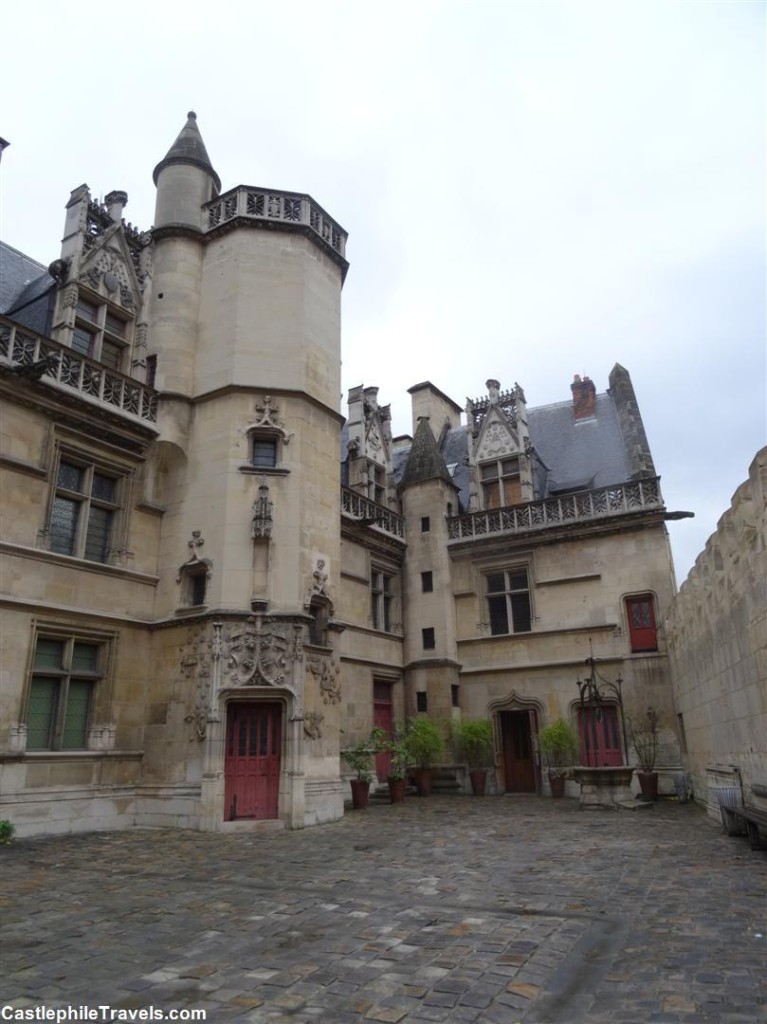
The Musée National du Moyen Âge is a museum housed in the Hôtel de Cluny. The museum is known for its collection of the six The Lady and The Unicorn tapestries, which I had wanted to see ever since reading Tracy Chevalier’s novel of the same name. The Musée National du Moyen Âge also contains a collection of artefacts from the Middle Ages, from illuminated books, stained glass, ancient statues and sculptures, decorative boxes, to religious objects and artwork, as well as having third century Gallo-Roman baths.

Want more information on the Musée National du Moyen Âge?
Address: 6 Place Paul Painlevé, 75005 Paris, France
Website: http://www.musee-moyenage.fr (in French only)
Closest metro station: Cluny – La Sorbonne
The Towers of Notre Dame
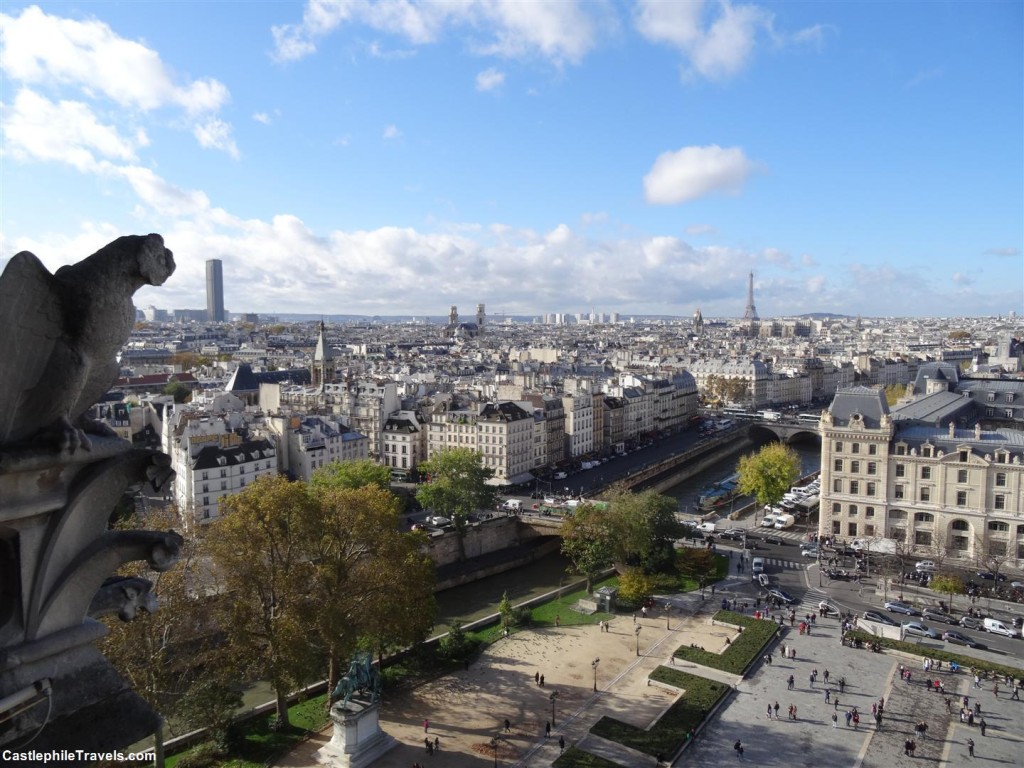
After visiting Notre Dame de Paris and admiring the beautiful stained glass rose windows, we joined the queue for the Towers climb. This was definitely easier to do in the off-season. We only had a wait of thirty minutes queueing along the side of the cathedral – much better than the two hour waits I’ve endured to climb the Towers during July and August.
By the time we climbed up to the top of the South Tower, the sky had cleared, giving us beautiful views over Paris.
Want more information on the Towers of Notre Dame?
Address: Rue du Cloître Notre-Dame, 75004 Paris, France
Website: http://www.notredamedeparis.fr/spip.php?article477
Closest metro station: Cité
The Archaeological Crypt of Notre Dame

Maybe I’ve read too many ghost stories, but whenever I hear the word ‘crypt’, I think of dark chambers full of tombs and decaying bodies. However, the Archaeological Crypt of Notre Dame, which is accessible from the courtyard in front of the cathedral, displays ruins of Roman foundations from when Paris was known as Lutetia.
I’m not sure if I would have visited it if it hadn’t been part of the Paris Museum Pass, but that’s one of the good things about the pass – it allows you the freedom to check out a museum you might not otherwise have gone into, since it doesn’t cost you anything more.
Want more information on the Archaeological Crypt of Notre Dame?
Address: 1, place du Parvis Notre-Dame, 75004 Paris, France
Website: http://www.notredamedeparis.fr/spip.php?article477
Closest metro station: Cité
The Musée du Louvre
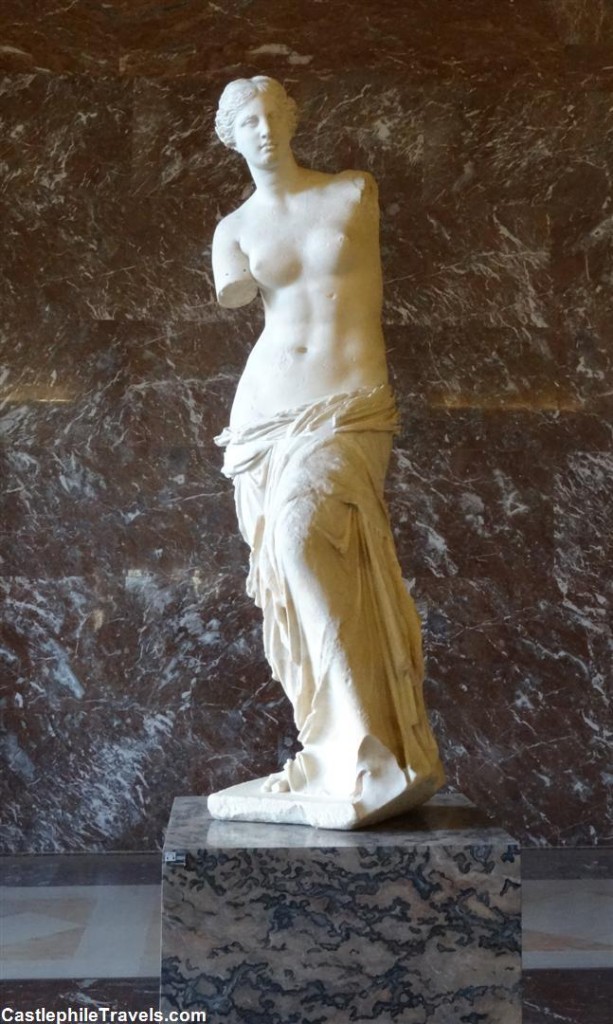
How is it that on my fourth visit to the Louvre I still end up getting lost and it is my brother who, on his very first visit, figures out how to get us to the Venus de Milo and the Mona Lisa? I will never understand why the Louvre makes me feel so disoriented.
Want more information on the Musée du Louvre?
Address: Musée du Louvre, 75058 Paris, France
Skip the lineup outside of the large pyramid by entering via the Galerie du Carrousel entrance on the Rue de Rivoli
Website: http://www.louvre.fr/en
Closest metro station: Palais-Royal–Musée du Louvre
Is the Paris Museum Pass worth it?
Cost of Paris Museum Pass: 56 Euros
Entrance costs from Day 1: 18 Euros
Cost of entry into the Musée de Cluny: 8 Euros
Cost of entry into Notre Dame de Paris: free
Cost of entry into the Towers of Notre Dame: 8.50 Euros
Cost of entry into the Archeological Crypt of Notre Dame: 3 Euros
Cost of entry into the Louvre: 12 Euros
Verdict: 6.50 Euros out of pocket, two days left
The Paris Museum Pass gives you free access to over forty museums and monuments in Paris and the surrounding region. We decided to purchase a four day pass, thinking that with our planned visits to the Chateau de Versailles, the Louvre, the Towers of Notre Dame and the Arc de Triomphe, we would eventually come out ahead after paying the 56 Euros per pass.
Buying the Paris Museum Pass
The first challenge we faced was where to buy the pass. The stall by Notre Dame where I had bought them before was closed, so we wandered over to the Louvre, having read on the Paris Museum Pass website that they could be bought at the attraction’s ticket desks or online. At the Louvre, we were directed to an information office halfway between the inverted pyramid and the information desk at the Louvre. They sold passes as well as memberships to the Louvre, and were very helpful.
To Versailles!
Armed with our Museum Passes, we caught the metro to Gare Montparnasse and then hopped on a suburban train to Versailles-Chantiers. It took about fifteen minutes to get there, and the way from the Versailles-Chantiers train station to the Chateau de Versailles is well signed.
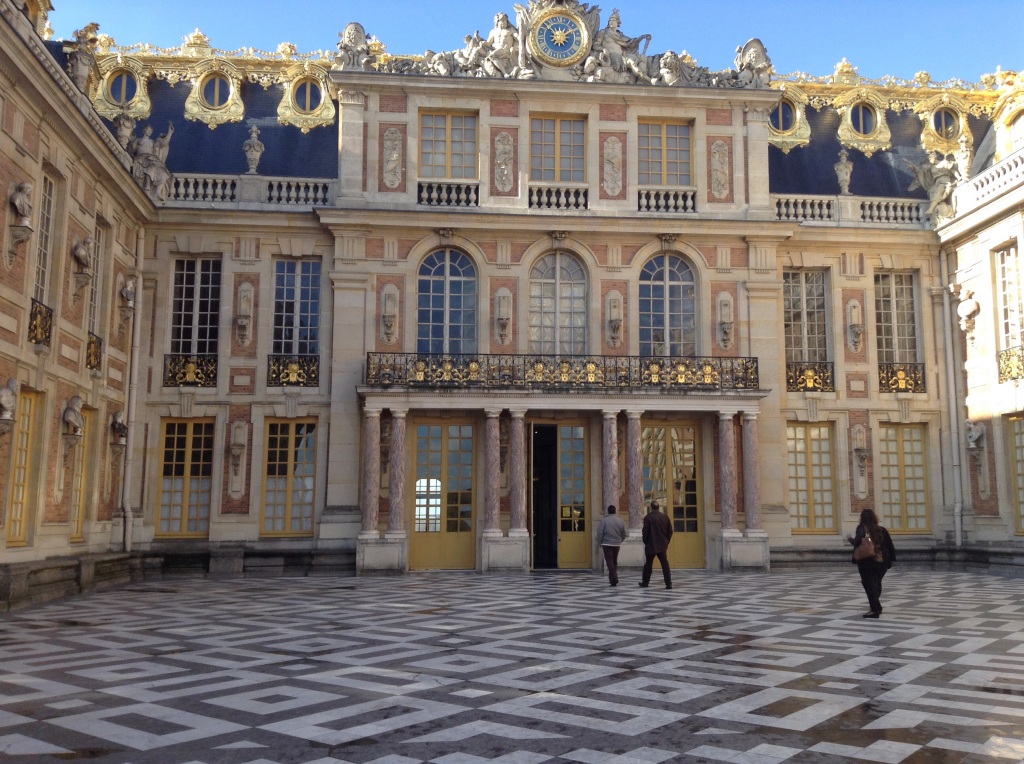
The displays at Versailles had been updated since I was last there four years ago. There were audio visual presentations about how the chateau had been extended over the years, which seemed to be new.
Versailles is one extravagant room after another, culminating in the Hall of Mirrors.

On this visit, we also went in to the Mesdames Apartments, which with their white walls and ceilings, were a good antidote to the wall-to-ceiling paintings of the state apartments (I especially liked Madame Adelaide’s library nook).
The Gardens of Versailles
It was a beautiful day for strolling around the gardens. Blue skies and bright sunshine made me forget it was only 12 degrees!
As we walked through the gardens from the chateau to the Trianons, we had fun getting lost in the maze of terraced gardens. Unfortunately, because we were there in November, the statues all had protective covers over them in preparation for winter, and construction and restoration works were taking place on many of the fountains, so the walk through the gardens and along the Grand Canal lost some of its idyll.
The Petit Trianon and Marie-Antoinette’s Hamlet
I could happily make the Petit Trianon and its grounds my home. The rooms inside are cosy and not too grand. (The theatre was closed while we were there).
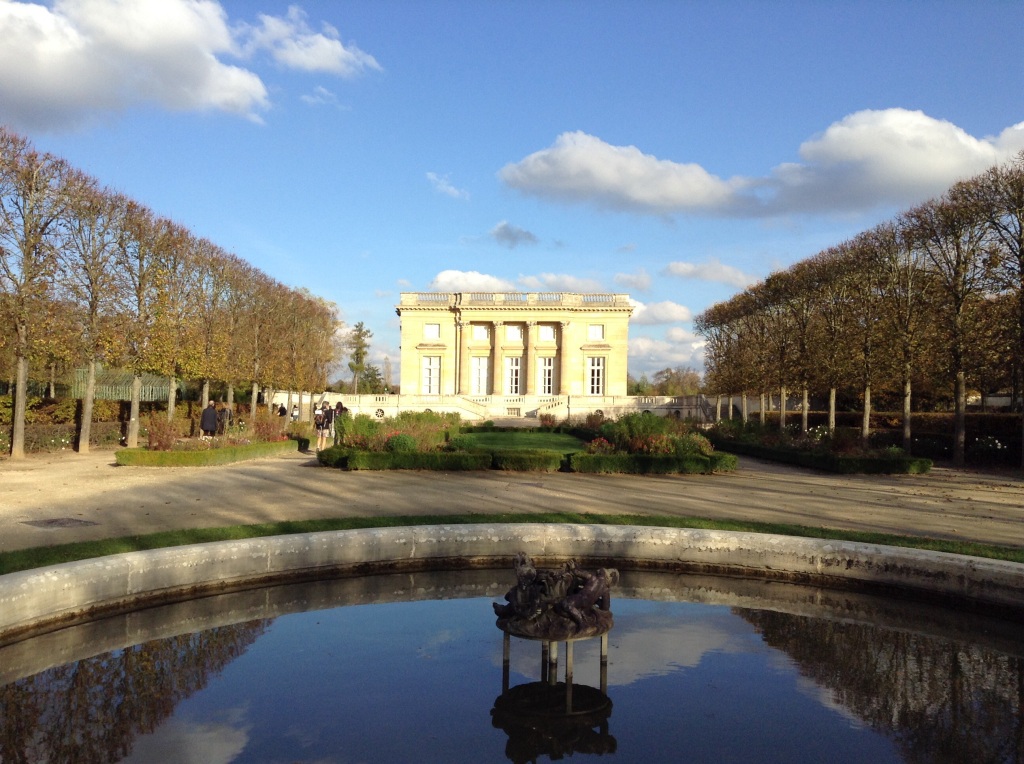
This visit I had more time to wander around the hamlet and look at the buildings. My brother asked me what the purpose of it all was. When I told him it was Marie Antoinette’s place to escape and pretend she was someone else, he thought it was made for her when she was a little girl. I corrected him, and when I asked him if he could imagine me at the same age having a place like this, he admitted that he could!
The Grand Trianon
It was 4:30pm by the time we reached the Grand Trianon. The sun was already beginning to set, but the lights hadn’t been turned on in any of the rooms, making them dark. I think that the reason that I struggled to like the Grand Trianon during my last visit was a combination of the rooms being dark, there being no real information about the rooms or their historical significance, and the fact that as the last place you visit during your time at Versailles, you are genuinely tired.
The Cotelle Gallery and the portico were still my favourite parts of the Grand Trianon (and you could walk through the Gallery – the last time I visited it was roped off).
Overall, we were very lucky with the weather and had a near-perfect day to visit Versailles!
Is the Paris Museum Pass worth it?
Cost of Paris Museum Pass: 56 Euros
Cost of entry into Versailles, the Gardens, the Grand Trianon and the Petit Trianon: 18 Euros
Verdict: 38 Euros out of pocket, three days left
